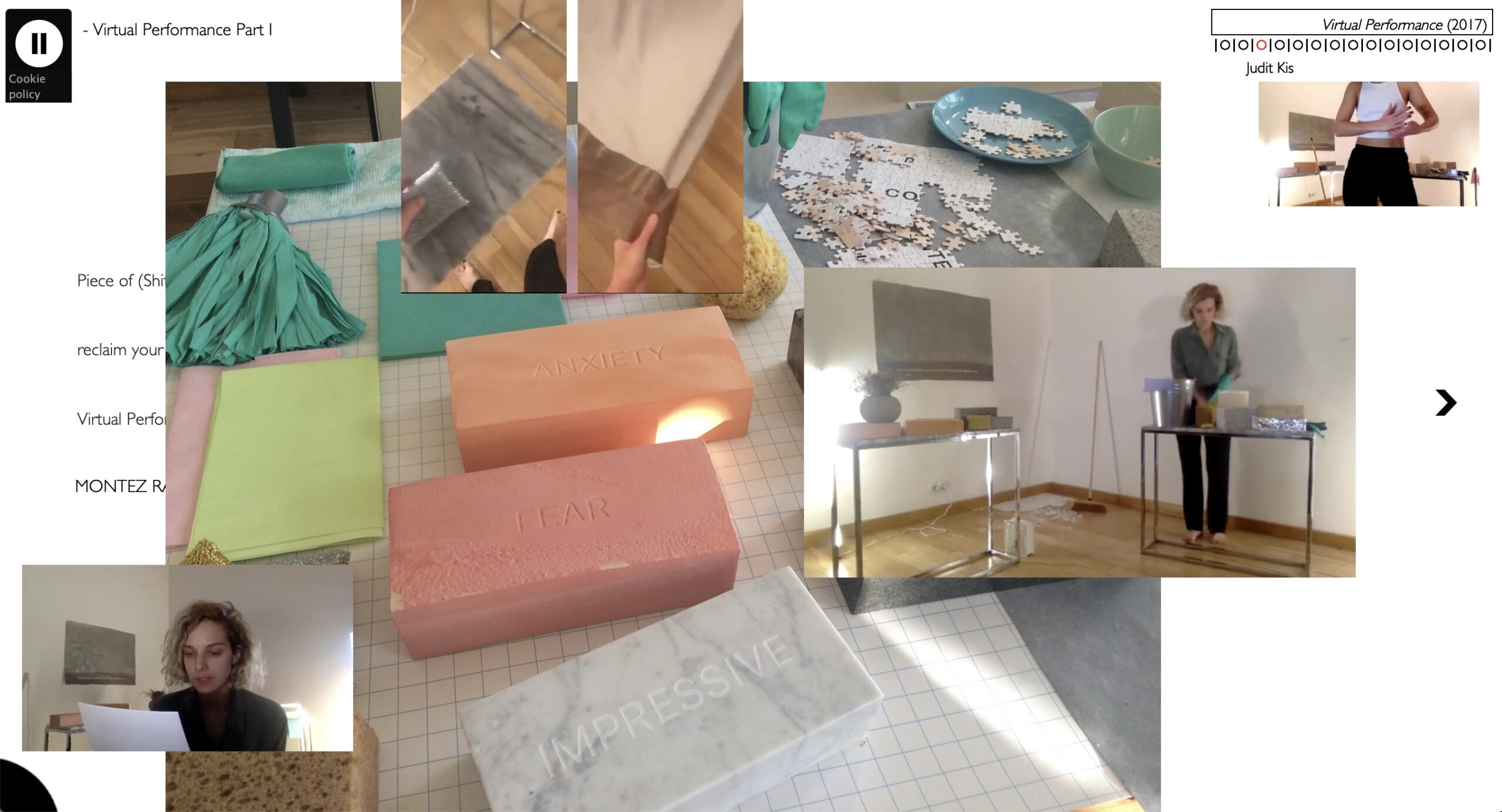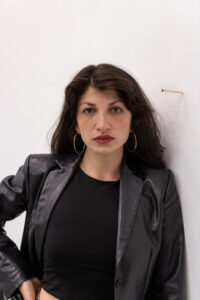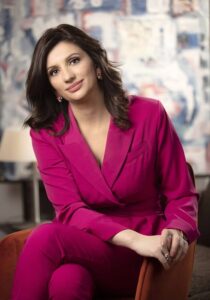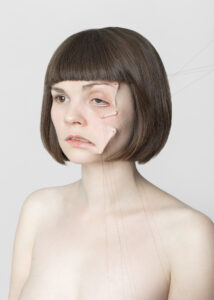Judit Kis
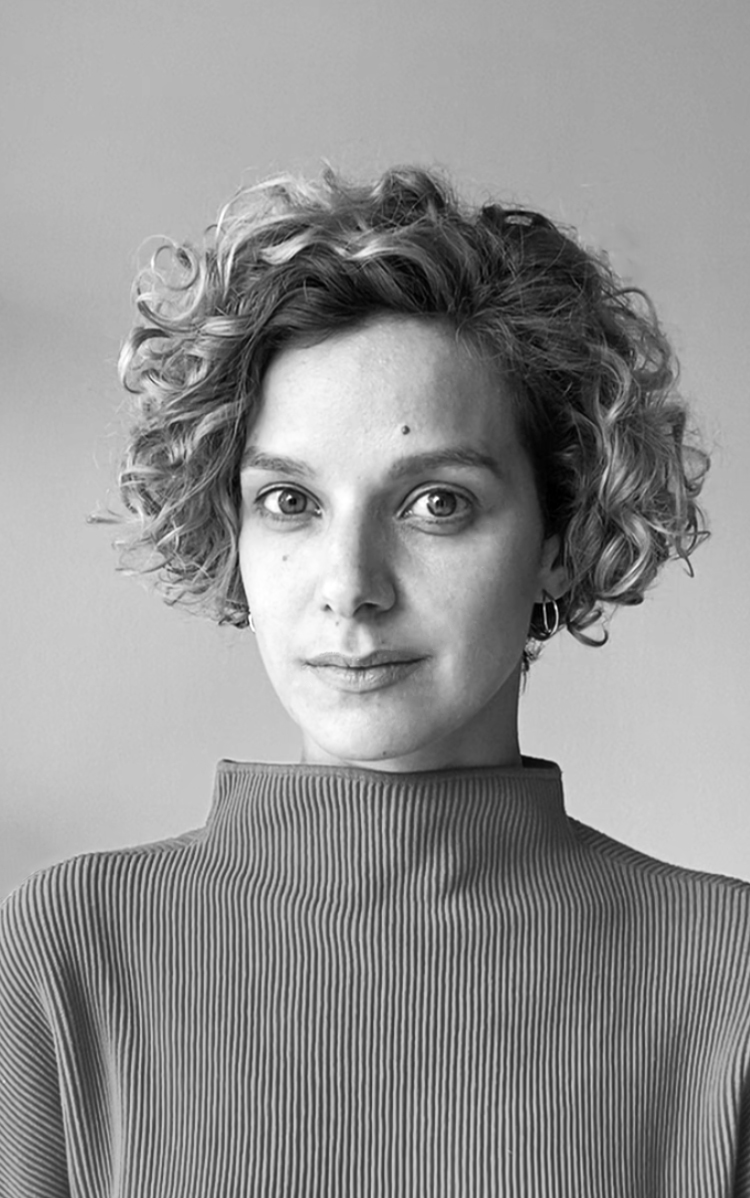
– born in 1988, an intermedia artist based in Budapest and Berlin. She studied fine art and curating at the Hungarian University of Fine Arts in Budapest and at the Chelsea College of Art and Design in London. Judit’s video performances and virtual diaries reflect on the experiences and traumas that shape our identities, personal boundaries and behavioural patterns. In her work she combines digital content with installations of objects made from different and innovative materials. In the past ten years she has participated in residencies, workshops and many exhibitions internationally. In 2015 her diploma project was included in the TIMEBASE media art exhibition at the New Budapest Gallery, and in 2016 she had a solo show, I Have Never Happened, in Geneva at Topic Gallery. From her theoretical research, Kis had a lecture performance at the Video Vortex XII. conference in Malta. In 2019 Kis was awarded the Derkovits Art Scholarship and exhibited her works at the Kunsthalle Budapest. In 2020 she received the ACAX – Leopold Bloom Art Award, with the opportunity to spend three months at Residency Unlimited in New York.
My work explores the possibilities of how to integrate my continuously constructed identity into society and documenting how I keep stretching my boundaries when presented with existential problems or emotionally difficult situations. With my intention to be transparent and embrace vulnerability, I would like to deepen the perception of the subject to a very personal and intimate level. The videos are illustrations of my writings, thoughts and my personal improvement. Most of the work is immaterial, but in order to set up my video performances I often create objects and build installations. I have a collection of bricks from different materials that are engraved by words reflecting both to their composition and human traits. My idea is to symbolise the elements of identities and the burdens of repetitive patterns. I worked with many craftsmen and other professionals to produce over 50 bricks1 from different materials (marble, granite, resin, wood, ceramic, silicon) and I think of these objects as the extension of my virtual work2.
Considering the transformative power of art in our thinking, my recent project deals with the topic of healing, self-care and contemporary rituals. I aim to explore alternative healing methods in different cultures that are less known or integrated. I would like to see the effects of these inherited traditions in our contemporary society, where technology rules our life, but we seek to experience things that can help us to connect to our own body and mind. I research practices in the fields of psychology, religion and anthropology, but I also source inspiration from online videos and other communities on social media. I am interested in what is accessible for everyday people who are seeking help. I think experiencing artworks which deal with these topics can be very powerful in ways of transforming our beliefs. They can remind the audience that they hold power over their lives and they aren’t excluded from society when dealing with mental problems or other seemingly incurable conditions.
In the past few years I had many experimental projects, an exhibition in a Facebook live event, a solo show and performances in private spaces and two few months long online projects presented on Instagram (#ihaveneverhappened3, #cyberlove4). My virtual solo show in 2017 was an experiment to break the cycle of rejection and neglect from the art world and through that online event I could engage a much bigger and relevant audience than I did with many of my gallery shows. Last year this project was selected for an international online group exhibition on the virtual platform of Skelf5. In 2019 I organized a collaborative project at the Zönotéka Gallery in Berlin called EXHALE. We envisioned a space where we could be together, recharge and experience art without objects, embracing vulnerability in a transparent and transformative way. It was a collective practice of self-care and radical empathy with movement, meditation, performances and a screening. The one day event was on the last day of the busy Berlin Art Week and we aimed to question and decompress the mass production of exhibitions and openings. Besides my practice I have an ongoing research called Practices Beyond the Self which is aimed to explore the social impact of self-defining and self-revealing performances. ‘Confessional art’ is a term to include artworks that intentionally and publicly expose the artist’s private life experiences. Their personal issues and struggles are used as the subject and inspiration to reflect and criticise social constructions. These projects are often dealing with mental health problems, related to discrimination, physical illness and emotional traumas. I find these practices important, because they embrace vulnerability in a way that it can create possibilities for healing not just individually but collectively. Performative works in general shift our focus on the body instead of objects, from the individual to the practice and then we can reach a community. I have ten years of experience in creating performative videos and I have been researching theories on identity construction, ecofeminism and on the ethics and aesthetics of collaborative practices. I will continue to work on my own projects, but beyond that I wish to collaborate with other artists and organise more community events. My long term aim is to create a network and platform for ‘confessional art’ practices.
The statement was written by the artist (2021).
1Image: Judit Kis, Standards, 2019, video installation, dimensions variable. Courtesy of the artist.2Image: Judit Kis, Brick installation, Art Market Budapest, 2020, installation, dimensions variable, photo Dávid Biró. Courtesy of the artist.
3Image: Judit Kis, I Have Never Happened, 2016, limited edition black and white funzine. Courtesy of the artist.
4Image: Judit Kis, Cyberlove, 2019, video installation at Magyar Műhely Galéria, dimensions variable, photo Dávid Biró. Courtesy of the artist.
5Image: Judit Kis, No Longer Being Able to be Able, virtual exhibition, SKELF, 2017–2020. Courtesy of the artist.
– szül. 1988, Budapesten és Berlinben dolgozik médiaművészként. A budapesti Képzőművészeti Egyetem intermédia és képzőművészet-elmélet szakára járt, valamint tanult a londoni Chelsea College of Art and Design-on. Videóperformanszai és virtuális naplói az identitásunkat, személyes határainkat és viselkedési mintáinkat alakító élményekre és traumákra reflektálnak. Munkáiban a digitális tartalmakat különböző, innovatív anyagokból készített installációkkal ötvözi. Számos rezidencián, workshopon és nemzetközi kiállításon vett részt. 2015-ben a diplomaprojektje bekerült az Új Budapest Galéria “TIMEBASE” című médiaművészeti kiállítására, 2016-ban egyéni kiállítása nyílt a genfi Topic Gallery-ben “I Have Never Happened” címmel. 2019-ben elméleti kutatásairól tartott előadást a XII. Video Vortex konferencián Máltán. Ugyanebben az évben elnyerte a Derkovits-ösztöndíjat is. Tavaly ő kapta az ACAX – Leopold Bloom Képzőművészeti Díjat, így idén három hónapig a New York-i Residency Unlimited keretein belül alkothat.
Művészeti gyakorlatommal célom, hogy vizuálisan dokumentáljam a magamon folytatott munka eredményeit, melyek önfeltáró vagy önreflexiós performanszokként értelmezhetőek. A videók személyes élményeket feldolgozva egy fejlődési folyamatra, felismerésre összpontosítanak. A sebezhetőségem felvállalásával és az őszinte megnyilvánulásokkal szándékom, hogy a néző érzékelése bensőséges szintre mélyülhessen. A videók gondolatok és emlékek illusztrációi, melyekben gyakran tárgyak is feltűnnek. Jelenleg a téglák1, mint ismétlődő motívum foglalkoztatnak. A rajtuk szereplő szavak többnyire személyiségjegyek, melyek visszahatnak az anyag minőségére, de lehetnek motivációs építőelemek, vagy akár terhes gondolatok. Ahhoz, hogy a téglákat különböző anyagokból (márvány, beton, fa, kerámia, gyanta stb.) elő tudjam állítani, sokféle szakemberrel kell együtt dolgoznom. A tégla szobrokból rendezett installációkkal szeretném elérni, hogy a virtuális munkák üzenete valós térbe is kiterjedjen2.
A művészet gondolatformáló erejét figyelembe véve, jelenleg az öngyógyítás és a gondoskodás lehetőségei foglalkoztatnak. Szeretném kevésbé ismert kultúrák gyógyító praktikáit és különböző rituáléit megismerni és látni, hogy van-e lehetőség ezek integrálására a mostani életünkbe. Bár a technológia határozza meg a mindennapjainkat, az a meglátásom, hogy sokan azokat az élményeket keressük, amelyek eredményeképpen mélyebben kapcsolódhatunk a testünkhöz és a lelkünkhöz. Olyan egyszerű gyakorlatokat szeretnék összegyűjteni és megmutatni, amelyek segítenek emlékezni rá, hogy van hatalmunk az életünk felett, és képesek vagyunk a körülöttünk lévő helyzeteken változtatni törődéssel és odafigyeléssel. Ezeket a gyakorlatokat a pszichológia, vallás, filozófia és antropológia területein kutatom, de virtuális közösségeket is feltérképezek. Olyan gyakorlatok érdekelnek leginkább, amelyek minél több segítségre szoruló ember számára elérhetőek. Úgy gondolom, hogy ha művészeti kontextusban is gyakrabban találkozunk ezekkel a témákkal, könnyebben átalakulhatnak azok a rossz beidegződések, miszerint mindenkinek egyedül kell megküzdenie a saját problémáival.
Az elmúlt évek kísérleti projektjei közé tartozik egy virtuális kiállítás élő Facebook eseményben, egyéni kiállítás és performansz privát terekben, és két egyedi jelzéssel követhető, hónapokig tartó Instagram aktivitás (#ihaveneverhappened3, #cyberlove4). A 2017-es virtuális kiállításom kitörés próbált lenni a szakmai visszautasításokból és a bemutatkozási lehetőségek hiányából. Az online esemény alkalmával egy sokkal tágabb és releváns közönséget sikerült elérnem, mint bármelyik korábbi galériás kiállításomon. Ezt a projektet 2020-ban beválogatták egy nemzetközi virtuális kiállításba a Skelf5 platformján.
2019 őszén EXHALE címmel szerveztünk egy kollaboratív eseményt a berlini Zönotékában, ahol a bensőséges légkör megteremtése volt a cél. A résztvevők speciális jóga, kollektív meditáció, workshopok és performanszok során szerzett élménye testi és lelki tapasztalat volt. A hét meghívott művész és terapeuta programja után a projekt egy vetítéssel záródott: olyan performatív videókat sorakoztattunk fel, amelyek szintén a test sebezhetőségét, az empátiát, az önmagunkkal és másokkal való törődést, valamint a gyógyulást hangsúlyozták. Az intenzív berlini Art Week utolsó napjára tervezett levezető esemény a kiállítások és megnyitók tömeges termelésére is próbált reflektálni. A gyakorlati projektek mellett elméleti kutatást is folytatok; Gyakorlatok Önmagunkon Túl címmel, amellyel a célom, hogy az öndefiníciós és önfeltáró performanszok társadalmi hatását vizsgáljam. Az önfeltáró művészet (confessional art) azokat az alkotásokat foglalja magába, amelyek szándékosan mutatják be a művész magánéleti tapasztalatait. A személyes ügyekből és küzdelmekből inspirálódó alkotók képesek kritikusan reflektálni társadalmi helyzetükre. Az ilyen projektek gyakran olyan mentális problémákkal foglalkoznak, amelyek kiváltó okai a diszkrimináció, fizikai betegségek és érzelmi traumák. Úgy gondolom, hogy ezek a gyakorlatok azért fontosak, mert képesek a sebezhetőséget olyan módon felvállalni, amely nem csak egyéni, hanem közösségi szinten is eredményezhet javulást. A performatív munkák általánosságban is inkább a testre terelik a figyelmünket a tárgyak helyett, az egyénről pedig a gyakorlatra, ami által eljuthatunk egy közösséghez. Mostanra tíz év tapasztalatom van performatív videók készítésében, miközben elméleti szinten az identitás konstruálását, valamint a kollaboratív gyakorlatok esztétikai és etikai vonzatait kutattam. A saját projektek folytatása mellett szeretnék további együttműködéseket szorgalmazni más művészekkel és több közösségi eseményt szervezni. Hosszú távú célom, hogy létrehozzak egy platformot és kapcsolati hálót az önfeltáró művészeti gyakorlatok számára.
A statementet a művész írta (2021).
1Kép: Kis Judit, Standards, 2019, videóinstalláció, változó méret. A művész jóvoltából.2Kép: Kis Judit, Tégla installáció, 2020, installáció az Art Market Budapesten, változó méret, fotó Biró Dávid. A művész jóvoltából.
3Kép: Kis Judit, I Have Never Happened, 2016, limitált kiadású, fekete-fehér fanzine. A művész jóvoltából.
4Kép: Kis Judit, Cyberlove, 2019, videóinstalláció a Magyar Műhely Galériában, változó méret, fotó Biró Dávid. A művész jóvoltából.
5Kép: Kis Judit, No Longer Being Able to be Able, virtuális kiállítás, SKELF, 2017–2020. A művész jóvoltából.
